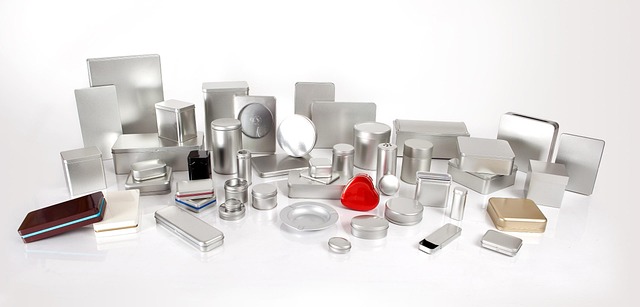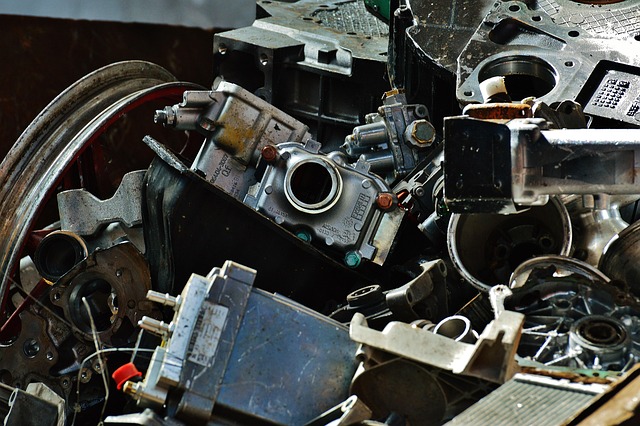High-quality metalwork is crucial in industrial design, enhancing machinery performance, durability, and aesthetics. Precision casting, machining, and welding techniques produce robust components that withstand harsh conditions. Strict quality control measures from material selection to advanced testing ensure longevity. Customization through CAD/CNC technologies allows for innovative, efficient, and aesthetically pleasing designs, setting new industry standards in Industrial Design.
High-quality metalwork is a cornerstone of modern industrial design, driving efficiency and reliability in machinery and equipment. This article delves into the intricate world of metalworking, exploring its pivotal role in enhancing industrial processes. We examine advanced materials and techniques shaping today’s manufacturing landscape. From rigorous quality control ensuring durability to innovative customization meeting unique demands, discover how exceptional metalwork optimizes performance across diverse sectors.
- Understanding the Importance of High-Quality Metalwork in Industrial Design
- Materials and Techniques for Superior Machinery and Equipment Construction
- Ensuring Durability and Reliability Through Rigorous Quality Control Measures
- The Role of Innovation and Customization in Modern Metalworking for Industrial Applications
Understanding the Importance of High-Quality Metalwork in Industrial Design

High-quality metalwork is an integral part of industrial design, influencing the performance, durability, and aesthetics of machinery and equipment. In the competitive landscape of manufacturing, where precision and efficiency are paramount, the integrity of metal components cannot be overlooked. Well-crafted metalwork ensures that machines operate smoothly, reducing downtime and maintenance costs. It also enhances the overall reliability of industrial systems, which is crucial for meeting production targets and maintaining operational continuity.
Industrial designers play a pivotal role in specifying and selecting materials, understanding their properties, and ensuring they meet the demanding requirements of various applications. From choosing the right alloys to employing advanced fabrication techniques like precision casting, machining, and welding, each step contributes to creating robust metal components that withstand harsh conditions. This meticulous approach not only improves product quality but also fosters innovation in industrial design, pushing the boundaries of what’s possible in manufacturing.
Materials and Techniques for Superior Machinery and Equipment Construction

In the realm of industrial design, the choice of materials and techniques plays a pivotal role in crafting high-quality machinery and equipment. Metalwork, as a cornerstone of this process, demands precision and expertise to meet the stringent requirements of modern industries. The most robust and durable materials, such as stainless steel, aluminium alloys, and specialised metals like titan, are often the backbone of these intricate designs. These materials offer not just strength but also resistance to corrosion, ensuring longevity in harsh operational environments.
Techniques employed in metalwork contribute significantly to the overall quality and performance. Advanced manufacturing processes like precision casting, computer-aided design (CAD), and computer-aided manufacturing (CAM) enable the creation of complex geometries and exacting tolerances. Laser cutting and machining further enhance accuracy, while additive manufacturing techniques add a new dimension by allowing for intricate, custom designs. These methods not only improve functionality but also reduce material waste, aligning with sustainable industrial practices.
Ensuring Durability and Reliability Through Rigorous Quality Control Measures

In the realm of industrial design, high-quality metalwork is paramount for machinery and equipment. To ensure longevity and dependable performance, rigorous quality control measures must be implemented at every stage of production. This meticulous process begins with stringent material selection, where only the toughest and most resistant alloys are chosen to withstand the rigors of industrial environments. Advanced testing protocols then validate the integrity of these materials, ensuring they meet the required standards for strength, corrosion resistance, and durability.
Beyond material scrutiny, comprehensive quality control encompasses intricate manufacturing processes, precise tolerancing, and thorough inspections. Automated systems and experienced technicians collaborate to detect even the slightest deviations from specifications, allowing for immediate corrections. Regular maintenance checks further fortify the system by identifying potential issues before they escalate, thereby enhancing overall equipment reliability and extending service life. These stringent controls are vital in fostering a robust industrial design that seamlessly integrates functionality, aesthetics, and longevity.
The Role of Innovation and Customization in Modern Metalworking for Industrial Applications

In today’s competitive industrial landscape, innovation and customization play pivotal roles in metalworking for machinery and equipment. Modern metalworkers are no longer confined to traditional methods; instead, they embrace advanced technologies like computer-aided design (CAD) and computer numerical control (CNC) machining. These tools enable precise, complex shapes and intricate patterns that were once challenging or impossible to achieve. The result is enhanced functionality, improved durability, and tailored solutions for diverse industrial applications.
Moreover, the integration of innovative materials and manufacturing processes allows for lighter, stronger, and more durable metal components. This not only reduces weight and energy consumption in machinery but also increases operational efficiency and longevity. Customization, driven by a deep understanding of Industrial Design principles, ensures that equipment meets specific client needs, be it a unique space constraint or a particular performance requirement. This level of customization fosters a competitive edge for manufacturers, pushing them to develop cutting-edge metalwork solutions that set new industry standards.
In today’s industrial landscape, high-quality metalwork is not just a luxury but a necessity. As we’ve explored through this article, understanding the significance of superior materials and techniques in machinery and equipment construction is paramount for lasting performance and reliability. Rigorous quality control measures ensure these components withstand the rigors of their environments, while innovation and customization cater to the ever-evolving demands of modern industrial design. By prioritizing high-quality metalwork, businesses can enhance efficiency, reduce downtime, and maintain a competitive edge in an increasingly demanding global market.
